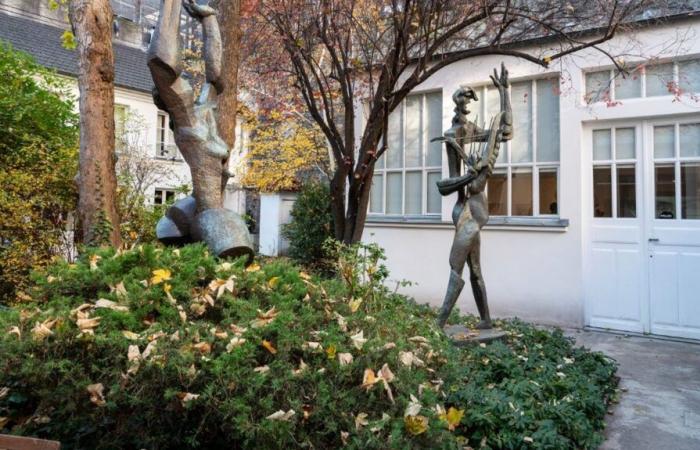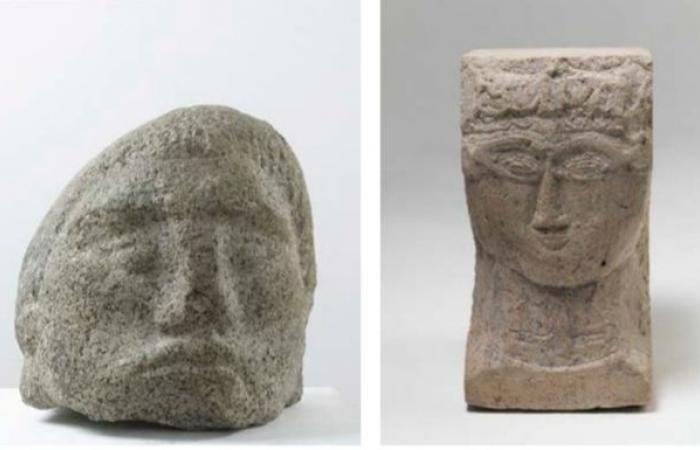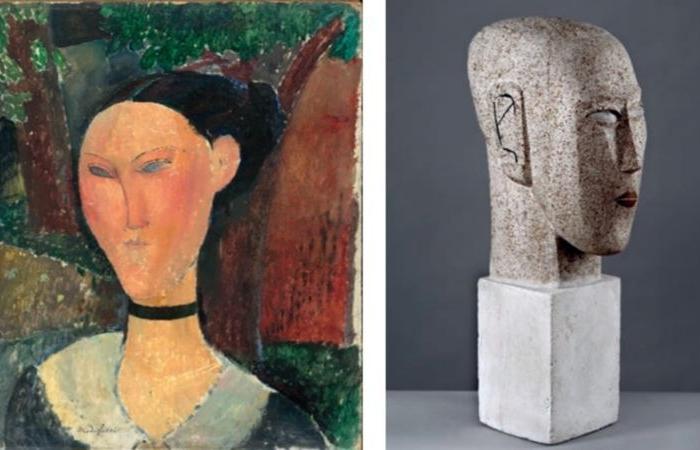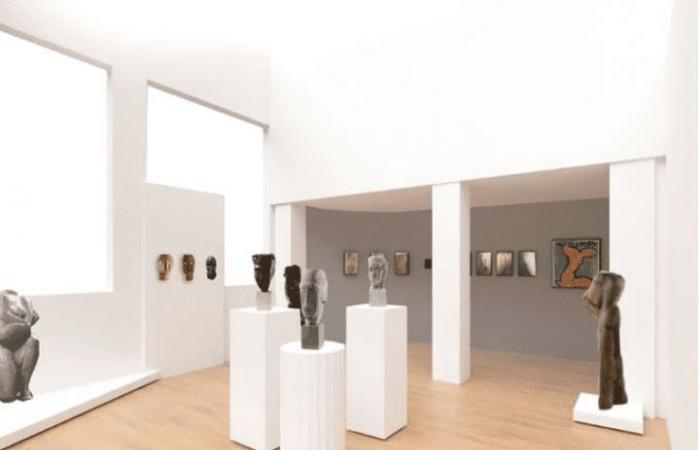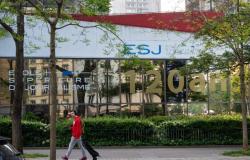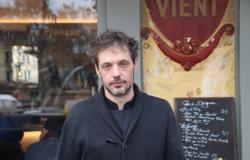At 100 bis rue d’Assas, a small secret garden houses bronze sculptures and vestiges of Paris of yesteryear. Former home-workshop of Ossip Zadkine, sculptor of Russian origin, this legendary place invites, from November 14, 2024, to discover a new exhibition which explores the creative friendship between Zadkine and Amedeo Modigliani, two giants of the avant-garde guard from the beginning of the 20th century.
Through this immersion in Montparnasse from the 1910s to 1920s, the most effervescent square kilometer of the last hundred years and which has shaped modern art, discover the exhibition Modigliani/Zadkine, an interrupted friendshipwhich runs until March 30, 2025. It also makes a discreet reference to Chana Orloff, honored by the last exhibition, and who knew the two friends well. This is an event not to be missed for any art lover who wants to breathe the air of the bohemian Paris of yesteryear.
Open the doors of the exhibition and immerse yourself in the story of two artists who, despite a friendship as brief as it was burning, continued to write the most beautiful pages of the avant-garde of the early 20th century.
On the one hand, Amedeo Modigliani, born on the sunny shores of Tuscany, arrived in Paris in 1906. On the other, Ossip Zadkine, born in the icy expanses of Belarus, arrived in 1910. Two exiles, one meeting , and this friendship was born, although tragically interrupted by the premature death of Modigliani in 1920 at the age of 35. The museum, which preserves Zadkine’s workshop, highlights their meeting.
Through five rooms which follow one another with entirely geometric rigor, the exhibition tracks the parallel trajectories of Modigliani and Zadkine. Modigliani, influenced by African sculpture and the unique style of Toulouse-Lautrec, focused on stylized heads, while Zadkine, earlier in his career, drew on Egyptian, Greek and African art for his sculptures. Then, in 1913, Modigliani, with his clear vision, pushed Zadkine to experiment with idealized heads with frontal shapes. If their influences intersect, each forges their own universe: Modigliani with his portraits of dazzling expressiveness, Zadkine with a subtle mastery of materials.
From the first room, the scene is set: two heads. One, feminine, seems carved from a stone that Modigliani would undoubtedly have stolen, due to lack of means to purchase raw materials. The other, one Heroic head by Zadkine, much more majestic. If you hadn’t been warned, you would think you were in the galleries of the Louvre, department of Greek antiquities. And this is where the magic happens, or rather the fusion – artistic, of course – between the two men begins.
Throughout the works, we are struck by the evidence of this artistic complicity. But Modigliani’s greater notoriety should not hide their exchanges. They are of the same generation, have the same admiration for Brancusi and Modigliani’s famous leaning heads recall the icons of Zadkine’s country. The scenography by Joris Lipsch (Studio Matters) goes beyond the simple presentation of the works. It highlights friendship through spaces bathed in natural light, with large glass roofs typical of an artist’s studio, offering a view of the garden.
Around 1914, Modigliani abandoned sculpture to do only painting and give in to what Zadkine would later call in his memoirs “the lady speculation”. The friendly rupture is complete, amplified by the impact of the war.
Despite everything, from an artistic point of view, Modigliani’s following works remain marked by the indelible imprint of sculpture. In the first room of the exhibition, The Woman with the Velvet Ribbonwith its simplified face-mask, plunges us into a quest for refined forms, directly influenced by African sculptures. We could also give a nod to Zadkine, who, in 1924, imagined his Woman’s head with elongated features and blue eyes, an obvious reference to Modigliani. The parallel is striking, especially in the treatment of these mysteriously empty or full orbits, without pupils, like windows open to infinity – in the manner of the Italian, but in a sculpted version.
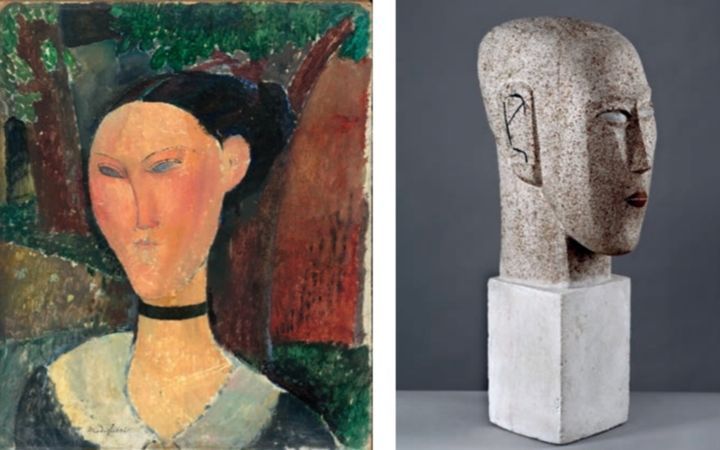

So, are you ready to solve the riddle hidden in the rooms? “Real or false Modigliani”? The museum plays hide and seek with the works of the Italian artist, sometimes very authentic, sometimes… a little less. An example? As you move towards room 3, you will come across a painting titled The Brown Woman. According to Thierry Dufrêne, the curator, this painting is a “faux regardable” : it is magnificently executed, but is nevertheless only a counterfeit. In addition, the Nancy museum refused to lend the original, a clear indication.
The commissioner does not hesitate to say it: “Modigliani holds a record for forgeries”a statement which well sums up the complicities to authenticate some of his works. And so as not to leave us hungry, Cécilie Champy-Vinas, the director of the museum, reminds us that “the negotiations to obtain an authentic Modigliani are arduous, and the months of research required are intense.” A Modigliani is worth it.
The highlight of the show arrives in the last room of the museum and not the least: Ossip Zadkine’s workshop. There, are found in the layout of the workshop, designed as a “temple to humanity”three heads sculpted in 1918 and 1919. They occupy a central place. These heads with elongated faces and simplified features are strongly reminiscent of the caryatids sculpted by Modigliani before 1914, notably those presented during the Salon d’Automne of 1912. The arrangement of these works in space evokes the seven heads sculpted by Modigliani at that time , arranged “like organ pipes” to produce a “inner music”in the words of sculptor Jacques Lipchitz.

The museum’s upcoming exhibition will highlight Zadkine’s art and his relationship with art deco, another major turning point in 20th-century art history.
“Modigliani/Zadkine, a friendship interrupted”
From November 14, 2024 to March 30, 2025 at the Zadkine museum
100 bis rue d’Assas – 75006 Paris



